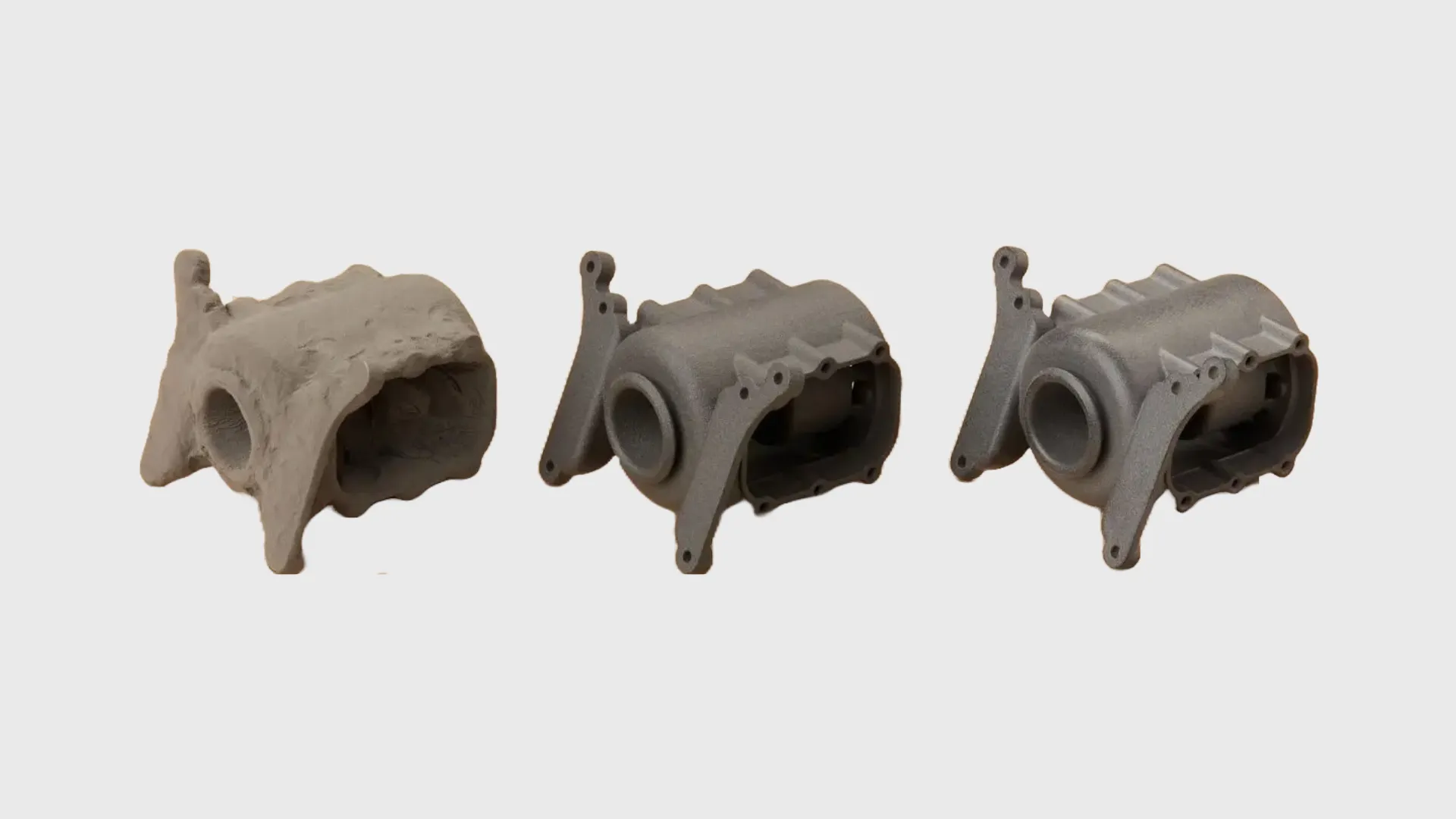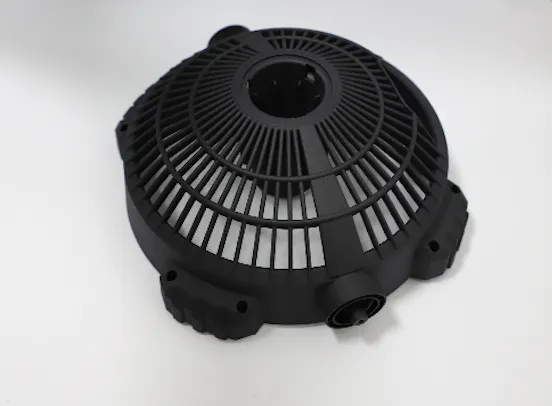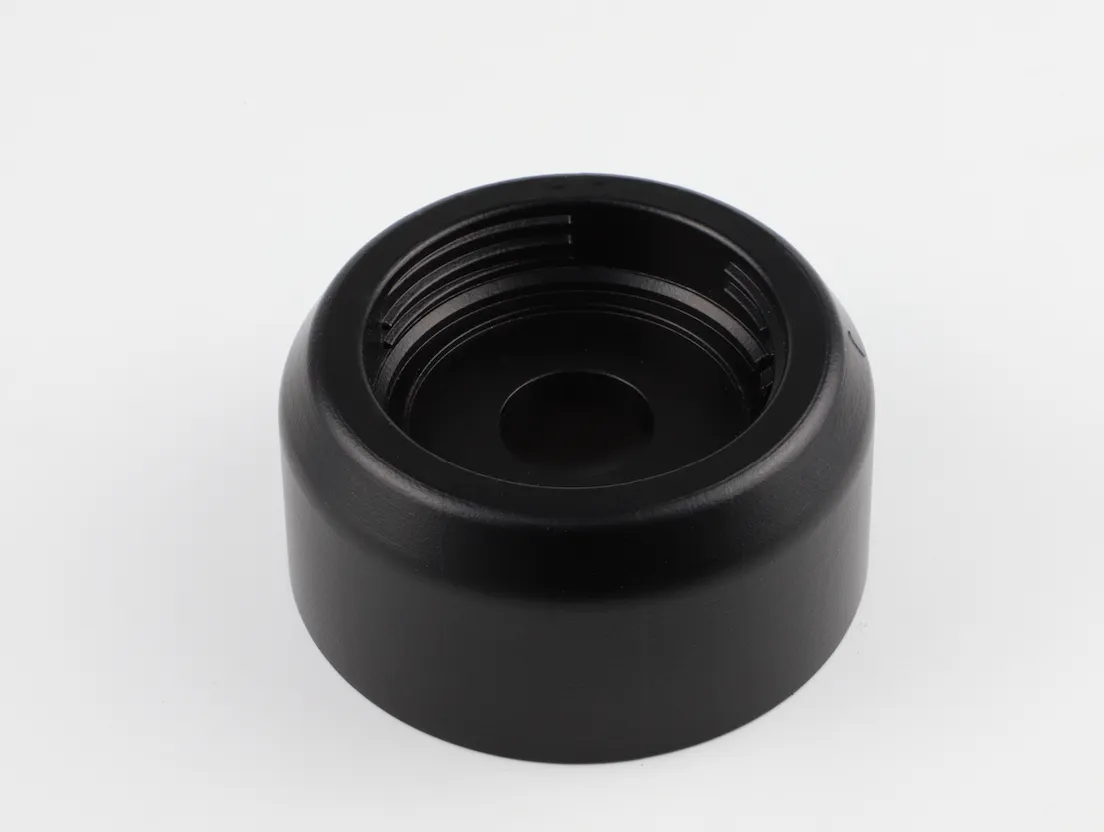Guide to MJF Nylon[+ Property Comparison]

Explore MJF nylon materials, compare properties, applications, and choose the best 3D printing solution for your needs.
Introduction
Multi Jet Fusion (MJF) is a powder bed fusion 3D printing technology developed by HP that excels at producing strong, accurate, and detailed nylon parts.
This guide explores the most common MJF-compatible nylon materials, their performance characteristics, and how to select the right one for your project.
Overview of MJF Nylon
What is MJF?
Multi Jet Fusion (MJF) is an advanced 3D printing technology developed by HP. It uses nylon powder and fusing agents, which are selectively applied and then fused layer by layer with infrared heat. MJF produces high-precision, strong, and detailed parts without the need for support structures, making it ideal for both prototyping and low-volume production.
Why Nylon?
Nylon is the most commonly used material in MJF because it offers an excellent balance of properties:
Strong and durable – suitable for functional and load-bearing parts
Good heat and chemical resistance – ideal for industrial and outdoor use
Stable and reliable printing – consistent quality and fine surface detail
Versatile options – including PA12 (general use), PA11 (flexible), PA12 GB (rigid), and PA12 CF (high-strength)
Key Material Types and Properties
MJF materials are built around nylon (polyamide) powders with different performance profiles tailored for specific applications.
Here we have compared the most widely used materials for your reference.
Comparative Performance Table of MJF Nylon Materials

Property | PA12 | PA11 | PA12 GB | PA12 CF | TPA |
|---|---|---|---|---|---|
Tensile Strength (MPa) | 48–50 | ~45 | 65–70 | 75+ | 8–10 |
Elongation at Break (%) | ~20 | 45–50 | ~5 | 3–5 | 200–250 |
Heat Deflection Temp (°C) | ~175 | ~180 | 185–190 | >190 | <100 |
Density (g/cm³) | ~1.01 | ~1.03 | ~1.35 | ~1.15 | ~0.95 |
Modulus (MPa) | ~1700 | ~1500 | ~3500 | ~6000 | ~20 |
Surface Finish / Detail | Excellent | Good | Fair | Fair | Moderate |
Moisture Absorption | Moderate | Higher | Low | Low | High |
Fatigue Resistance | High | Very High | Moderate | High | Excellent |
Chemical Resistance | Good | Excellent | Moderate | Good | Moderate |
Printability | Excellent | Good | Moderate | Moderate | Moderate |
Cost Level | $ | $$ | $$ | $$$ | $$ |
Description | Balanced strength and detail | Flexible, ductile, impact-resistant | Rigid, glass-filled for dimensional stability | Lightweight, carbon fiber-reinforced | Flexible nylon elastomer |
Ideal For | Functional prototypes, housings | Wearables, living hinges, snaps | Structural brackets, jigs, tooling | Aerospace, robotics, drones | Soft components, cushioning, seals |
How to Choose the best nylon for your project
Choosing the right MJF nylon depends on your application needs—whether you prioritize flexibility, stiffness, impact resistance, or printability.
Here’s a quick guide to help:
Need General-Purpose Strength and Detail?
Choose: PA12
Great all-rounder with balanced strength, detail, and low cost
Ideal for: Functional prototypes, mechanical housings, enclosuresNeed High Flexibility and Ductility?
Choose: PA11
Best for snap fits, hinges, and wearable parts
Offers the highest elongation at break and excellent fatigue resistance
Ideal for: Wearables, living hinges, impact-prone parts
Need Stiffness and Dimensional Stability?
Choose: PA12 GB (Glass Bead-filled)
Rigid and thermally stable with high modulus
Great for structural use, but lower elongation and finish
Ideal for: Fixtures, tooling, jigs, structural bracketsNeed Maximum Strength and Stiffness?
Choose: PA12 CF (Carbon Fiber-reinforced)
Highest strength and stiffness
Lightweight and functional in high-heat environments
Ideal for: Aerospace, robotics, drones, performance componentsNeed Flexibility and Softness?
Choose: TPA (Thermoplastic Polyamide Elastomer)
Highly elastic with rubber-like properties
Ideal for: Flexible seals, cushioning, soft-touch parts
Pro Tips:
For best results, match mechanical and thermal needs with part geometry and function.
Consider moisture sensitivity for parts exposed to humid conditions (PA11 resists moisture better than PA12).
Test with prototypes before committing to final production.
Pros and Cons of MJF Nylon
Pros of MJF Nylon
High Strength and DurabilityExcellent tensile, fatigue, and impact resistance—ideal for functional parts.
No Support Structures NeededEnables complex geometries and internal channels in a single build.
High Accuracy and Fine DetailDelivers tight tolerances and sharp features.
Fast and Scalable ProductionLayer-by-layer fusing allows high throughput and efficient batch runs.
Low Waste and Reusable PowderUp to 80% of unused powder can be recycled, reducing material cost.
Isotropic Mechanical PropertiesUniform fusion leads to consistent strength in all directions.
Suited for Prototyping and ManufacturingSupports both one-off parts and volume production in the hundreds.
Cons of MJF Nylon
Grainy Surface FinishParts often have a matte, slightly rough texture.
Limited Default ColorsTypically grey or off-white; requires dyeing for custom colors.
High Equipment CostIndustrial machines are expensive and not hobbyist-friendly.
Powder Handling RequiredDepowdering adds post-processing time and safety concerns.
Long Cooling Time for Large JobsParts need to cool slowly to prevent warping.
Limited Material VarietyFewer material choices compared to FDM or SLA.
MJF Nylon Printing Process (Step-by-Step)
Multi Jet Fusion (MJF) is a 3D printing method that makes strong and detailed nylon parts. It works by spreading thin layers of nylon powder, then using special liquids and heat to fuse the powder into solid shapes.
This part explains how the MJF process builds parts layer by layer, from spreading the powder to cleaning off the extra material at the end.
Watch it in Action:
Powder Spreading: A thin layer (~80 microns) of nylon powder is evenly spread across the build platform.
Agent Jetting
a. Inkjet heads apply:Fusing Agent to areas that will solidify
b. Detailing Agent around edges for better resolution
Infrared Fusion: An IR lamp heats the layer, melting selected areas to form a solid cross-section.
Layer-by-Layer Printing: The platform lowers, and the process repeats until the full part is built.
Cooling: The entire build cools gradually to prevent warping.
Depowdering: Loose powder is cleaned off, revealing the final parts.
Further Reading: Deep Dive into MJF 3D Printing
For a comprehensive understanding of MJF technology, including its working principles, material options, cost factors, and real-world applications, refer to our detailed guide:
MJF 3D Printing: The Ultimate Guide [+ 2025 Service Providers]
For personalized assistance, project consultations, or to discuss specific requirements, unionfab team is ready to help. You can predict the printing price of your project using our 3d printing cost calculator below.

Calculate Your Cost
Post-Processing Options for MJF Nylon
1. Bead Blasting

The most common method for removing excess powder and slightly smoothing the surface. Standard for most MJF parts.
2. Dyeing

Since nylon absorbs dye well, parts can be colored using dye baths (typically black, but also red, blue, green, etc.). Used for both aesthetics and part identification.
3. Vapour or Chemical Smoothing

Involves exposing the part to vaporized solvents or chemicals that melt the surface slightly to produce a smoother, more finished look. Also reduces porosity.
4. Painting

For visual enhancement or added performance (e.g., UV protection, hydrophobic properties), parts can be coated with paints, lacquers, or protective films.
5. Machining or Drilling

Parts can be further processed with CNC tools to add threads, smooth surfaces, or integrate with other components. MJF nylon machines well without cracking.
Applications of MJF Nylon
MJF nylon materials are used across a wide range of industries thanks to their versatility, strength, and design freedom.
From automotive and aerospace to medical and consumer products, each nylon variant—PA12, PA11, PA12 GB, PA12 CF, and TPA—offers unique benefits tailored to specific application needs.
1. Automotive Industry
Recommended Materials: PA 12, PA 12 GB
Why:
● PA 12 offers a strong strength-to-weight ratio and excellent dimensional stability for interior components and ducting.
● PA 12 GB (glass-filled) provides increased stiffness and heat resistance, making it ideal for custom brackets and structural fixtures.
2. Medical and Orthotics
Recommended Material: PA 11
Why:
● PA 11 is ductile, impact-resistant, and derived from renewable castor oil—making it ideal for prosthetics, braces, and orthotic insoles.
● Its flexibility and skin-safe properties are essential for custom medical wearables.
3. Consumer Products
Recommended Materials: PA 12, TPA
Why:
● PA 12 enables sharp detail and durable parts, perfect for eyewear, headphone housings, and gadget cases.
● TPA (nylon-based elastomer) is ideal for flexible, shock-absorbing parts like phone bumpers or wearables.
4. Aerospace
Recommended Materials: PA 12 CF, PA 12 GB
Why:
● PA 12 CF (carbon fiber-reinforced) offers lightweight strength and thermal stability—ideal for UAV parts and lightweight brackets.
● PA 12 GB brings rigidity and higher heat deflection, suitable for fixtures and internal components.
5. Industrial Manufacturing
Recommended Materials: PA 12, PA 12 GB
Why:
● PA 12 balances strength and flexibility, suitable for jigs, fixtures, and end-use tooling.
● PA 12 GB enhances stiffness for more demanding production tools and grippers.
6. Robotics and Automation
Recommended Materials: PA 12 CF, PA 12
Why:
● PA 12 CF provides the mechanical strength and low weight needed for robotic arms, joints, and sensor mounts.
● PA 12 is excellent for housings and moving parts requiring durability and detail.
7. Education and Research
Recommended Materials: PA 12, PA 11
Why:
● PA 12 delivers accuracy and stability for mechanical assemblies and lab prototypes.
● PA 11 offers extra flexibility for experimental or bio-compatible components.
Summary:
Choosing the right MJF nylon material depends on your application’s specific performance requirements.
➡ Choose PA12: For strong, detailed general-purpose parts
➡ Choose PA11: For flexible, fatigue-resistant wearable components
➡ Choose TPA: For elastic, soft-touch cushioning or seals
➡ Choose PA12 GB: For rigid, dimensionally stable structural parts
➡ Choose PA12 CF: For high-strength, lightweight engineering applications like aerospace or robotics
Conclusion
MJF 3D printing with nylon offers a strong, detailed, and reliable solution for both prototyping and production. With material options like PA12, PA11, PA12 GB, PA12 CF, and TPA, you can match performance to your project needs—whether it’s strength, flexibility, or precision. Choose the right nylon, apply the right post-processing, and MJF will deliver high-quality parts ready for real-world use.
FAQs
What is the difference between MJF and SLS nylon?
Both MJF (Multi Jet Fusion) and SLS (Selective Laser Sintering) use nylon powder and build parts layer by layer. The main differences are:
Energy Source: MJF uses infrared heat with fusing agents; SLS uses a laser.
Print Speed: MJF is typically faster and more efficient for production.
Surface Finish: MJF parts generally have better surface detail and more consistent mechanical properties in all directions (isotropic strength).
Coloring: MJF parts are gray by default and dye evenly, while SLS parts are white and require more preparation for coloring.
Is MJF stronger than FDM?
Yes. MJF parts are significantly stronger and more consistent than FDM parts, especially in the Z-axis. Key differences:
Layer Bonding: MJF produces more isotropic parts, meaning strength is consistent across all axes.
Finish & Accuracy: MJF offers finer detail and smoother surfaces without support scars.
Material Properties: MJF nylon is engineered for industrial-grade applications, while FDM materials vary widely in quality and strength.
What is the strongest type of nylon?
Among MJF nylon options:
PA12 CF (Carbon Fiber-reinforced) is the strongest in terms of tensile strength and stiffness.
PA12 GB (Glass Bead-filled) is highly rigid and dimensionally stable, ideal for tooling.
PA11 is not the strongest in stiffness but offers excellent impact and fatigue resistance.

